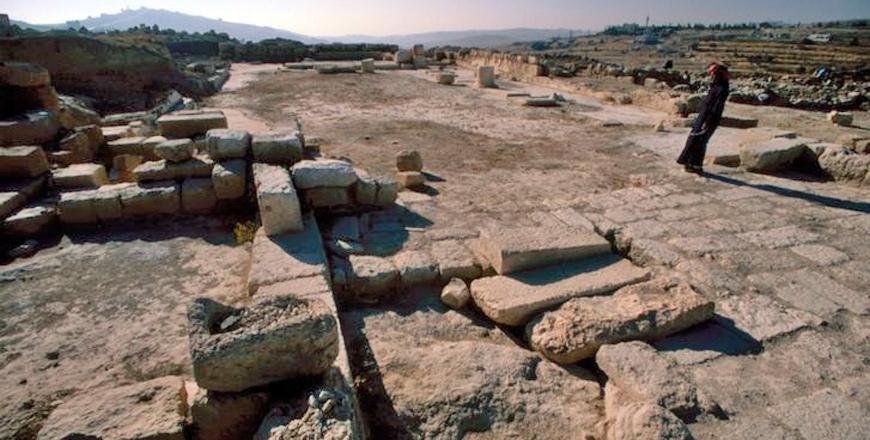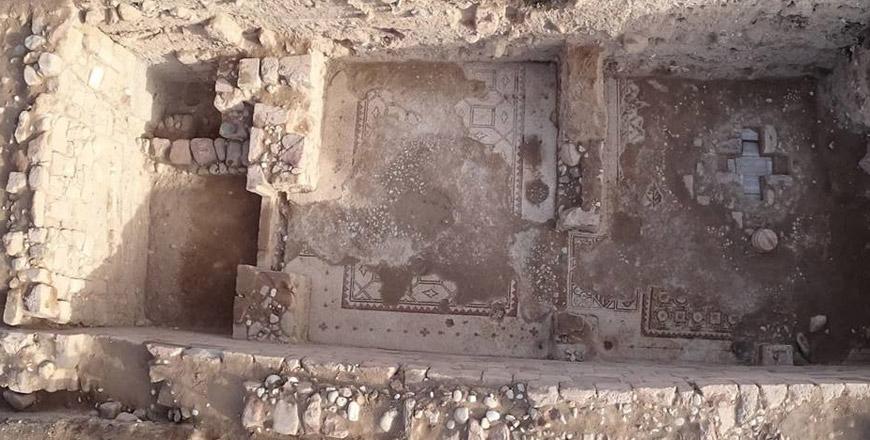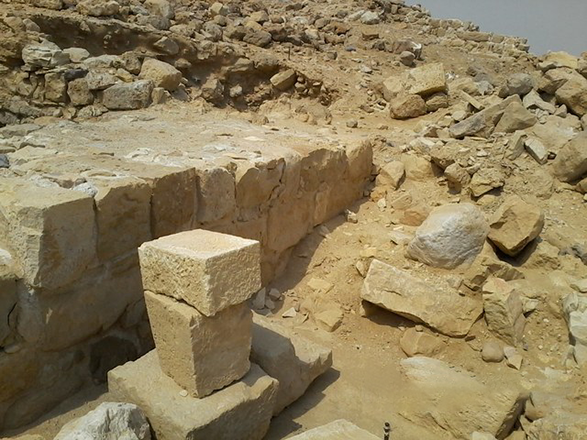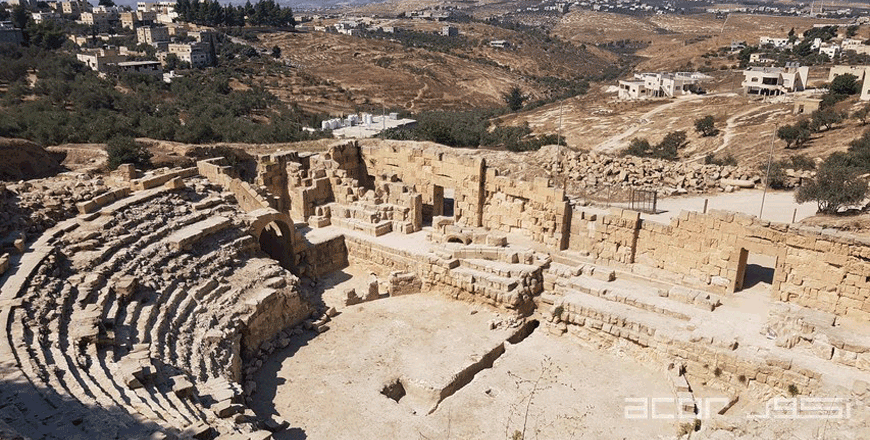You are here
UJ professor highlights Khirbet Yajuz discoveries
By Saeb Rawashdeh - Dec 07,2018 - Last updated at Dec 07,2018

In this undated photo, remains of one of the churches found at Kirbet Yajuz, some 11km north of Amman, can be seen (Photo courtesy of ACOR)
AMMAN — A fish-shaped glass vessel from the Byzantine period was just one of many significant discoveries found at Khirbet Yajuz, some 11km north of Amman.
“The area was well-known for a cemetery and an oak forest that was cut down due to urban development,” University of Jordan (UJ) professor, Lutfi Khalil, said during a recent lecture titled “The Excavated Glass from Khirbet Yajuz”.
The lecture was organised by the German Protestant Institute of Archaeology.
Khirbet Yajuz was first mentioned by traveller George Merrill in 1883, while Hugh Thompson excavated a Roman tomb in an area nearby in 1972, the professor said.
There are remains of four churches in the area and a team from the Department of Antiquities unearthed a fifth church two years ago, Khalil continued, adding that two wine presses were also found, which indicated wine production and exports through the Via Traiana Nova, an ancient Roman road connecting Ayla (Aqaba), Philadelphia (Amman) and Gerasa (Jerash).
A palace dating from the Byzantine era highlighted the importance of the site, which might had been a shrine due to the significant number of churches, the archaeologist suggested.
The area was most likely surrounded by vineyards in order to supply the wine presses with grapes during the heyday of the settlements (the 6th and 7th centuries AD).
An intact cemetery was also discovered beneath a chapel, he continued, and some 132 skeletal remains were found there.
Furthermore, “various types of artefacts were retrieved, including 27 pottery candlesticks, 22 oil lamps, 10 glass vessels, bracelets, rings, earrings, anklets, buttons, nails and coloured beads”, the professor elaborated.
“Studying glass objects in Yajuz was another phase of the project where a team of scholars and students from UJ cleaned and chemically analysed them,” said Fatma Mari, adding that each of the 400 fragments of glass was photographed and categorised.
During the summer, the team worked meticulously with glass jars found at the cemetery, noted Mari, underlining that researches dated glass from the Roman to Abbasid periods as each of the historical phases had a unique methodology of glass production.
Despite the abundance of objects excavated at the site, “researchers still don’t know whether they were locally produced or imported from regional centres... Also, there were hints of Western influence in the glass production,” Khalil highlighted.
Related Articles
AMMAN — Modern Ghor Safi, located at the southeastern end of the Dead Sea near the lowest point on earth, has been populated for over 12,000
AMMAN — The site of Bir Madhkur is located in the Petra hinterland some 12 km northwest of Petra, near Wadi Araba.
AMMAN — Home to the remains of the ancient city of Capitolias, excavations in the modern-day town of Beit Ras in northwestern Jordan have of
















